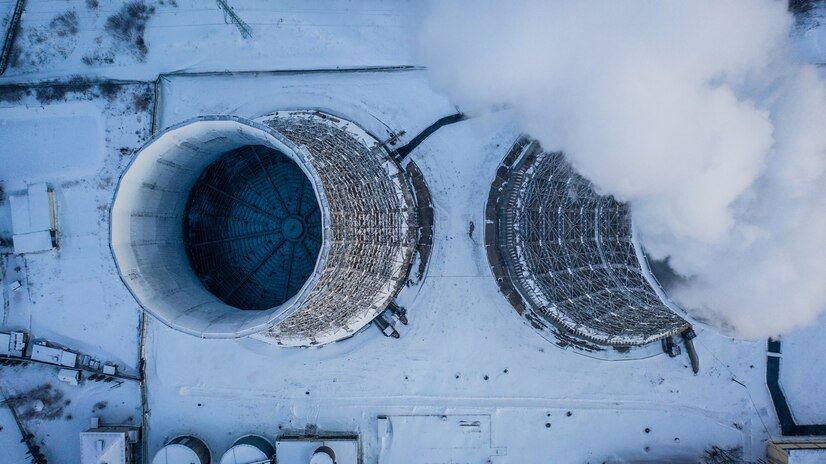In the growing field of renewable energy, thermal energy storage (TES) plays a crucial role in bridging the gap between energy production and consumption. While renewable sources like solar and wind power are reliable and environmentally friendly, they often generate power intermittently. Thermal Energy Storage offers a solution by storing energy in the form of heat, allowing it to be used when needed most. This article will explore what thermal energy storage is, its benefits, and how it is shaping the future of energy systems.
What is Thermal Energy Storage?
Thermal Energy Storage refers to the process of storing excess thermal energy produced during times of high demand and releasing it when needed. There are several types of TES technologies, including sensible heat storage, latent heat storage, and thermochemical energy storage. Each method involves storing energy as heat in various mediums such as water, molten salt, or phase-change materials.
One of the most common forms of thermal energy storage is molten salt storage, which is used in concentrated solar power plants. In this system, solar energy is used to heat salt to very high temperatures, and this heat is stored for later use. This allows the power plant to produce electricity even when the sun is not shining.
How Does Thermal Energy Storage Work?
The basic principle of thermal energy storage is simple. During periods of excess energy generation—such as during the day when solar power output is high—thermal energy storage systems store energy in the form of heat. When energy demand peaks or renewable generation drops, the stored heat can be released to generate power or provide heating to buildings, industrial processes, and other applications.
- Sensible Heat Storage: This method stores energy by raising the temperature of a substance, like water or rock. The temperature increase is proportional to the amount of energy stored. The most common examples include hot water tanks and molten salt storage in solar thermal plants.
- Latent Heat Storage: Latent heat storage uses materials that absorb or release energy when they change phases, such as from solid to liquid or liquid to gas. This process enables a high density of energy storage in a relatively small space. Phase change materials (PCMs) are commonly used in this form of storage.
- Thermochemical Storage: This type of storage stores energy through chemical reactions. The energy is released when the chemical reaction is reversed, making it a promising technology for long-duration energy storage.
The Benefits of Thermal Energy Storage
Thermal Energy Storage offers several advantages for both the energy grid and consumers:
- Grid Stability and Reliability: TES helps stabilize the grid by storing excess energy during periods of low demand and releasing it during peak hours. This is particularly valuable in grids that are increasingly powered by intermittent renewable energy sources.
- Cost-Effectiveness: By optimizing energy production, TES can reduce the need for costly peak power plants, which are typically powered by fossil fuels. Thermal storage can help lower the cost of energy, making it more affordable for consumers.
- Sustainability: Thermal energy storage plays a vital role in the global transition to sustainable energy. By allowing the use of excess renewable energy, it reduces the reliance on fossil fuels, cutting down on greenhouse gas emissions and helping to combat climate change.
- Long Duration Storage: Unlike batteries, which are typically limited in how long they can store energy, thermal energy storage systems can store heat for extended periods, sometimes for days or even months, making them ideal for long-duration energy storage needs.
Applications of Thermal Energy Storage
Thermal energy storage has a wide range of applications in both residential and industrial sectors:
- Solar Power Plants: In concentrated solar power (CSP) plants, thermal energy storage is used to store solar energy during the day and release it during the night, enabling 24/7 power generation.
- Building Heating and Cooling: In buildings, TES systems can store energy from renewable sources for heating and cooling. By using thermal mass (such as walls or floors that absorb and release heat), energy can be stored and used to maintain comfortable indoor temperatures.
- Industrial Processes: Industries that require high temperatures, such as cement production or food processing, can benefit from thermal storage systems. These systems can provide heat when needed, reducing the need for traditional, fossil-fuel-powered heat sources.
- District Heating: Thermal storage is commonly used in district heating systems, where it stores energy for the entire district or neighborhood. The stored heat can be distributed to homes and businesses for space heating and hot water.
The Future of Thermal Energy Storage
As the demand for renewable energy continues to rise, thermal energy storage technologies will play an increasingly important role in energy management. Innovations in thermal storage materials, such as phase change materials and advanced thermal salts, promise to make energy storage even more efficient and cost-effective. Additionally, the integration of thermal storage with smart grids could allow for better management of energy demand and distribution, further optimizing energy use.
In the future, thermal energy storage could also be combined with other energy storage solutions, such as battery storage, to create hybrid systems that are even more reliable and efficient.
Thermal energy storage is a vital piece of the puzzle in the global transition to a renewable energy future. By storing and releasing energy as heat, TES helps make renewable energy more reliable, affordable, and sustainable. Whether in solar power plants, industrial applications, or homes, thermal energy storage is proving to be an indispensable tool for energy storage and management.
As technology continues to advance, the potential of thermal energy storage will expand, helping to create a more stable and sustainable energy grid. For a cleaner, more reliable energy future, thermal energy storage is undoubtedly an essential solution.




